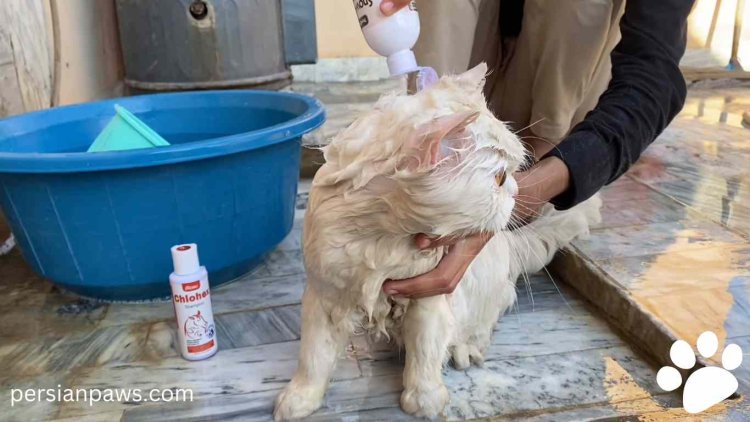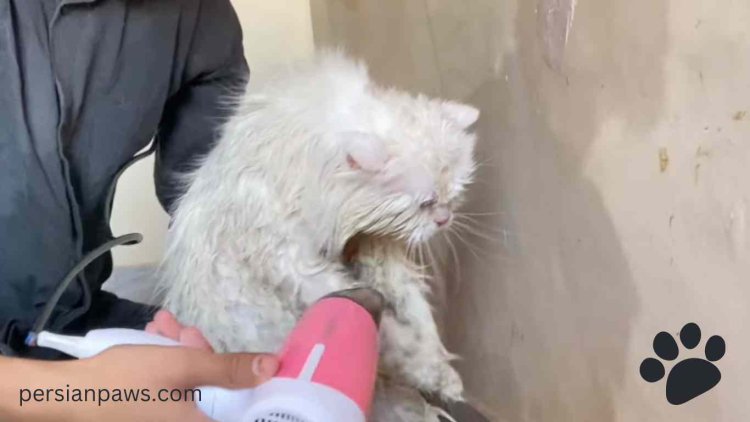How to Bathe a Persian Cat: A Complete Guide for Persian Cat Lovers
Discover the first-rate techniques on a way to bathe a Persian cat with our whole manual. Learn vital pointers for making ready, bathing, and drying your Persian cat, making sure their long, expensive fur stays smooth and mat-free. This step-through-step manual covers everything from selecting the right cat-safe shampoo to preserving your Persian cat calm and relaxing within the path of the tub, making the revel exciting for you and your bushy friend.

Table of Contents
Bathing a Persian cat might seem like a difficult task due to their long, luxurious fur, but with the right approach, it can be a smooth and enjoyable experience for both you and your feline friend. This guide will provide you with all the necessary steps and tips to ensure a successful Persian cat bath.
Signs Your Persian Needs a Bath
- Visible dirt or debris in the fur
- Greasy or oily feeling coat
- Matting that's difficult to brush out
- Strong odor
Preparing for the Bath
Gather Your Supplies
Before you start, make sure you have all the necessary supplies on hand:
Cat-safe shampoo: Choose a mild, hypoallergenic shampoo specifically designed for cats.
Conditioner: Optional but can help keep the fur soft and manageable.
Large towel: To wrap your cat after the bath.
Non-slip mat: Place in the sink or tub to prevent slipping.
Cup or sprayer: For rinsing.
Brush: To detangle fur before and after the bath.
Brushing Your Cat
Brush your Persian cat thoroughly to remove any knots and loose fur. This step is crucial to prevent matting during the bath and makes washing more effective. Use a wide-toothed comb to gently work through any tangles, starting from the ends of the fur and working your way up to the roots.
Bathing Your Persian Cat

Step-by-Step Guide
Fill the tub or sink: Fill with a few inches of lukewarm water. The water level should be low to prevent your cat from feeling overwhelmed.
Wet your cat gently: Using a cup or sprayer, gently wet your cat's fur, starting from the back and working your way toward the head. Avoid getting water in their ears, eyes, and nose.
Apply shampoo: Apply a small amount of cat-safe shampoo and lather it into their fur. Be gentle but thorough, ensuring you clean all areas, including the belly and legs.
Rinse thoroughly: Rinse off all the shampoo with lukewarm water, making sure no residue is left behind, as this can irritate your cat's skin.
Optional conditioner: If you're using a conditioner, apply it now and follow the instructions on the bottle. Rinse thoroughly again.
Dry your cat: Wrap your cat in a large towel and gently pat them dry. Be patient, as Persian cats have thick fur that holds a lot of water.
How to Dry a Cat Without a Blow Dryer
Using a blow dryer can be stressful for some cats. Here are some alternative methods:
Air dry: Allow your cat to air dry in a warm, draft-free room. Make sure the room is safe and free of cold drafts.
Towel dry: Use multiple towels to gently pat and absorb as much water as possible. Switch to dry towels as needed.
Using a Blow Dryer

If your cat tolerates it, you can use a blow dryer in a low, cool setting. Keep the dryer at a safe distance to avoid overheating or burning your cat's skin. Use a wide-toothed comb to gently fluff and dry the fur as you go.
Persian Cat Bathing Tips
Keeping Your Cat Calm
Stay calm: Your cat can sense your anxiety. Stay calm and speak softly to reassure them.
Short, positive sessions: If your cat is new to baths, start with short sessions and gradually increase the duration as they become more comfortable.
Treats and praise: Reward your cat with treats and praise before, during, and after the bath to create a positive association.
Handling Difficult Cats
Some cats might be more resistant to baths. If this is the case:
Seek help: Have a friend or family member assist you in holding and comforting the cat.
Professional grooming: Consider taking your cat to a professional groomer experienced in handling long-haired breeds.
Post-Bath Care
After the bath, it's important to keep your cat warm and comfortable. Offer a cozy spot with soft blankets and allow them to rest and groom themselves. Monitor their fur for any signs of matting or discomfort and brush them regularly to maintain a healthy coat.
Frequent Bathing Considerations
While regular baths are beneficial, over-bathing can strip natural oils from your cat's skin and fur. Aim to bathe your Persian cat every 4-6 weeks, or as needed based on their activity level and coat condition.
Tips for Longhaired Cat Bath
When bathing a longhaired cat like a Persian, it's important to pay attention to specific areas that might require extra care:
Underbelly and legs: These areas tend to collect more dirt and can mat easily. Be gentle but thorough.
Tail: The tail can be sensitive. Handle it with care and ensure it's fully cleaned and rinsed.
Face and ears: Use a damp cloth to gently wipe the face and ears, avoiding any direct water contact with these sensitive areas.
Common Mistakes to Avoid
Using human shampoo: Human shampoos can be too harsh for cats and cause skin irritation. Always use a cat-specific product.
Water too hot or too cold: Ensure the water is lukewarm to keep your cat comfortable.
Rushing the process: Take your time to avoid stressing your cat. A calm approach is essential.
Not rinsing thoroughly: Shampoo residue can cause skin issues. Make sure all shampoo and conditioner are rinsed out completely.
Conclusion
Bathing a Persian cat doesn't have to be a stressful experience. You can keep your Persian coat clean, healthy, and beautiful with the right preparation, patience, and technique. Regular baths, combined with routine brushing, will ensure your feline friend stays comfortable and happy. Remember, the key to a successful Persian cat bath is making it a calm and positive experience for both you and your cat.
By following these Persian cat bathing tips, you can ensure that bath time is a bonding experience that benefits both you and your beloved pet. Happy bathing!
What's Your Reaction?















